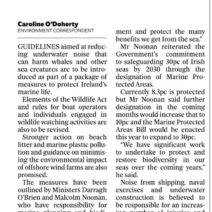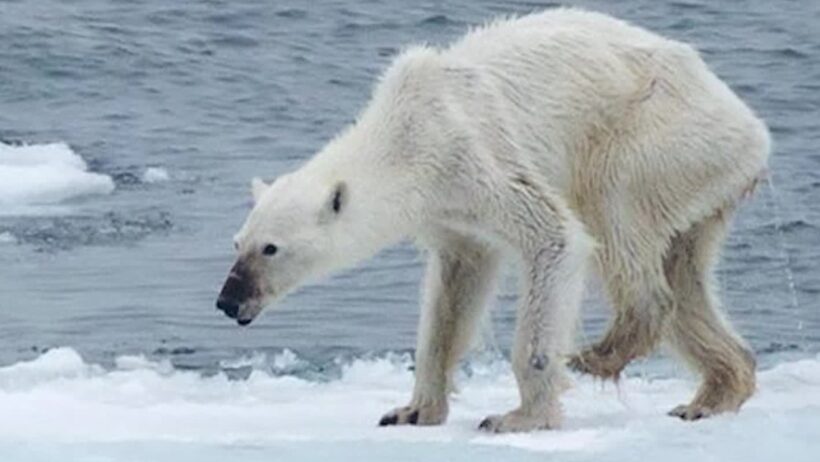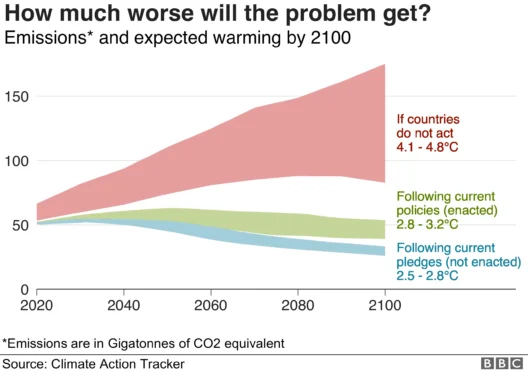Climate change, an insidious force altering our planet’s delicate balance, poses profound challenges to ecosystems ranging from lush kelp forests to the icy realms of the polar regions. As we unravel the intricate web of life, understanding the ramifications of rising global temperatures is paramount. This exploration brightens the spotlight on two contrasting ecosystems: the underwater kelp forests, often referred to as the “lungs of the ocean,” and the seemingly impenetrable polar ice caps, home to iconic species grappling with existential threats. Each habitat exemplifies unique vulnerabilities, and together they narrate a broader tale of environmental change.
Kelp forests, predominantly found along temperate coastlines, harbor unparalleled biodiversity. These underwater ecosystems provide crucial habitats for myriad marine species including fish, invertebrates, and mammals. However, they are increasingly threatened by climate change-related phenomena such as ocean acidification, rising sea temperatures, and nutrient runoff. The symbiotic relationship between kelp and the surrounding marine life is tenuous; as temperatures rise, the metabolic rates of many species may exceed their capacity to adapt. Moreover, the proliferation of harmful algal blooms, often catalyzed by nutrient pollution, can suffocate kelp and disrupt local food webs.
The implications are dire. Species that rely on kelp forests for shelter and sustenance are facing habitat degradation. Iconic marine life, such as sea otters and various fish species, face dwindling population numbers, triggering cascading effects throughout the ecosystem. These destabilizing changes compel us to consider solutions, such as increased marine protected areas and responsible fishing practices, that can assist in the rehabilitation of these critical habitats.
Conversely, in polar regions, the situation is equally precarious. The Arctic, characterized by its vast expanses of ice and unique ecosystems, is witnessing unprecedented transformations. Melting polar ice caps are not merely a visual indicator of climate change; they are harbingers of ecological vulnerability. The retreat of ice alters the habitat for a multitude of species such as polar bears, seals, and seabirds that depend on stable ice formations for breeding and hunting. As the ice disappears, these species face existential risks, prompting predictions of population declines that could lead to local extinctions.
The interdependence of polar species with their environment cannot be understated. For instance, sea ice serves as a platform for seal pupping, while also regulating thermoregulation for polar bears during hunting. The loss of this fuel rich habitat exacerbates food scarcity issues for apex predators like polar bears, which increasingly venture closer to human settlements in search of sustenance. This not only disrupts local human communities but poses threats of human-wildlife conflicts, further complicating conservation efforts.
Integral to this dialogue is the role of climate change in altering the fundamental processes of these ecosystems. The phenomena of ocean warming and acidification are not isolated to one location; they reverberate throughout global systems, affecting currents, species migration patterns, and nutrient cycling. For instance, the changes in oceanic conditions can lead to shifts in phytoplankton populations, which form the base of the marine food web. A decline in phytoplankton due to changes in water temperature or nutrient availability can have ripple effects, destabilizing the entire ecosystem.
Furthermore, the implications of climate change extend beyond biological impacts. Socioeconomic factors come into play as coastal communities rely on marine resources for their survival. The degradation of kelp forests not only threatens marine biodiversity but also the fishing industries dependent on these rich habitats. Similarly, the decline of polar species due to ice melt can adversely affect indigenous peoples’ cultures and livelihoods that are intricately linked to these ecosystems.
To address these multifaceted challenges, proactive measures are critical. Global climate agreements, such as the Paris Agreement, aim to unite nations in the fight against climate change but require comprehensive implementation at local and regional levels to be effective. Restoration initiatives, conservation of critical habitats, and sustainable practices must be prioritized. These strategies can bolster the resilience of ecosystems, ensuring their capacity to adapt and thrive amidst changing conditions.
Furthermore, public awareness and education are vital in galvanizing collective action. Communities can play a pivotal role in advocating for sustainable practices, whether through supporting local conservation efforts, engaging in public policy dialogue, or simply making environmentally conscious choices in their daily lives. The engagement of diverse stakeholders—ranging from local fishermen to policymakers and scientists—is essential in crafting holistic solutions that honor both the ecological integrity of ecosystems and the cultural significance of the communities intertwined with them.
In conclusion, the plight of kelp forests and polar ice is emblematic of the broader environmental crisis unfurling across our planet. The intricate interplay between climate change and ecosystem health underscores the urgency of a concerted response. As we navigate this perilous juncture, the responsibility to protect these vital ecosystems rests with us all. It is imperative to galvanize our efforts, understanding that the fate of our planet is inexorably intertwined with the fate of its ecosystems. Each action taken today can shape the health and vitality of our natural world for generations to come.





